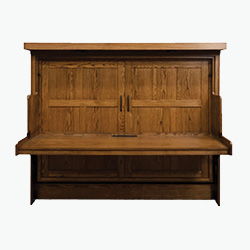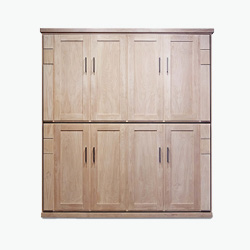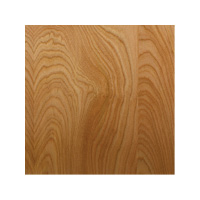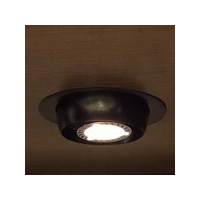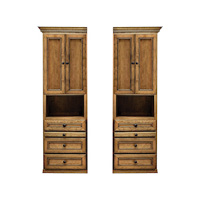What is the difference between grades of finishes?

During your consideration and purchasing process you may find that you have some questions regarding the different grades of finishes that Wilding Wallbeds offers. It’s a very common concern, so we wanted to take a minute to go over each finish grade and the processes they encompass.
Frequently Asked Questions
Most of the questions we get are centered around the cost difference between each of the grades. Many people want to know, “Why are the grade 2 and 3 finishes more expensive?” or “Am I getting more for my money with these higher grade finishes?” To answer these questions the first thing you need to know is that the cost difference isn’t based on the “quality” of the finish. It’s based more on the complexity of the finishing processes. The cost is calculated based on the time, labor, and materials used in each finishing process. This doesn’t necessarily mean that the higher the grade the better quality of the finish. In fact, each of Wildings Wallbeds are required to pass the same quality standards regardless of the grade of finish applied. I’ll explain this in more detail below.
Some of the other questions we get, have to do with durability and longevity of our products and if the grades differ in this respect. Talking about wood finishes and durability/longevity generally refers to the coatings system. The coating, or “Topcoat”, is the final finish applied on top of the colored product. The Topcoat does most of the heavy lifting when it comes to the durability and the longevity of each piece. It delivers the strength, luster and build of a finish system. The standard coating system applied at Wilding wallbeds is a high build pre-catalyst lacquer system. It’s extremely durable and long lasting as well as attractive. All of Wilding’s product goes through this same top coating process and all benefit equally from this amazing technology.
Finish Grades Explained
So to break this down further I would like to go through the grades of finishes and explain how they each serve their purpose and what each of them offer.
 Grade 2: The Grade 2 finishes are all slightly more complex than those finishes in the Grade 1 category. In the case of the glazes, It requires several additional steps to achieve the glazing effect. A “glaze” is usually an additional pigmented color coat that is designed to go over the top of the main color and add depth to the overall piece. It’s often used to highlight details in the lumber, paneling, and trim. A glaze will often leave the main color with a shading or warming effect depending on the color of glaze used. A glaze can be applied to any of the Grade 1 finishes. It’s often a favored choice of anyone ordering the more highly detailed Wallbeds such as the Harmony,Tuscany, Paris, etc. Or in the case of Knotty or Rustic Lumber, the glaze acts to highlight the deep grain lines and knots. In the case of the the remaining Grade 2 colors, which includes: Driftwood, Coffee Bean, Java, Charcoal and Cordovan. In order to achieve these specialized colors they undergo additional conditioning coats to tint the lumber. This often includes dye tinting or blanching the lumber before the stain is applied.
Grade 2: The Grade 2 finishes are all slightly more complex than those finishes in the Grade 1 category. In the case of the glazes, It requires several additional steps to achieve the glazing effect. A “glaze” is usually an additional pigmented color coat that is designed to go over the top of the main color and add depth to the overall piece. It’s often used to highlight details in the lumber, paneling, and trim. A glaze will often leave the main color with a shading or warming effect depending on the color of glaze used. A glaze can be applied to any of the Grade 1 finishes. It’s often a favored choice of anyone ordering the more highly detailed Wallbeds such as the Harmony,Tuscany, Paris, etc. Or in the case of Knotty or Rustic Lumber, the glaze acts to highlight the deep grain lines and knots. In the case of the the remaining Grade 2 colors, which includes: Driftwood, Coffee Bean, Java, Charcoal and Cordovan. In order to achieve these specialized colors they undergo additional conditioning coats to tint the lumber. This often includes dye tinting or blanching the lumber before the stain is applied.

Paint Grade Finishes: The Paint Grade finishes are similar to the Grade 2 finishes in cost but not so much in complexity. The added expense of a paint grade finish come from the time invested in preparing the lumber and the additional material costs. As most people know, lumber isn’t printed. It comes with all the glorious imperfections of a true natural product. So in order to achieve the paint grade surface, additional labor is necessary. The material is another obstacle of the paint grade finish. Lumber expands and contracts with changes in temperature and humidity. For this reason we use a specialized product that is designed to work with the lumber as it ages. Our standard paint grade colors include: White, Alabaster, Keystone Grey, Espresso, and Black.
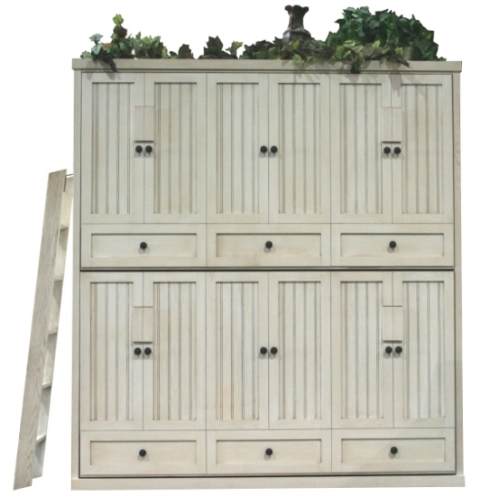
Grade 3: The Grade 3 finish is essentially a combination of a paint grade finish and a glazing system. The only color currently available in this Grade is Antique White. Antique White is the most labor, time, and material intensive product that we carry standard. It utilizes the same specialized paint grade products mentioned above but adds a highlighting glaze over the top to create an aged, off-white characteristic that is very unique.
Custom Colors
Even with all the standard options there’s still a chance you might be interested in something even more specific. If you fall into this category it’s no problem. Wilding wallbeds offers a slew of additional custom finish options. If you have any questions on how to further customize your finish please contact one of our awesome sales associates. They will walk you through our in-house step by step process to getting you a custom color match. For additional information please visit our finishes pages. You can also swing by any one of our four locations and meet with us face to face. Written by
Tyson Jones
Team Leader
Finishing Department
Written by
Tyson Jones
Team Leader
Finishing Department

